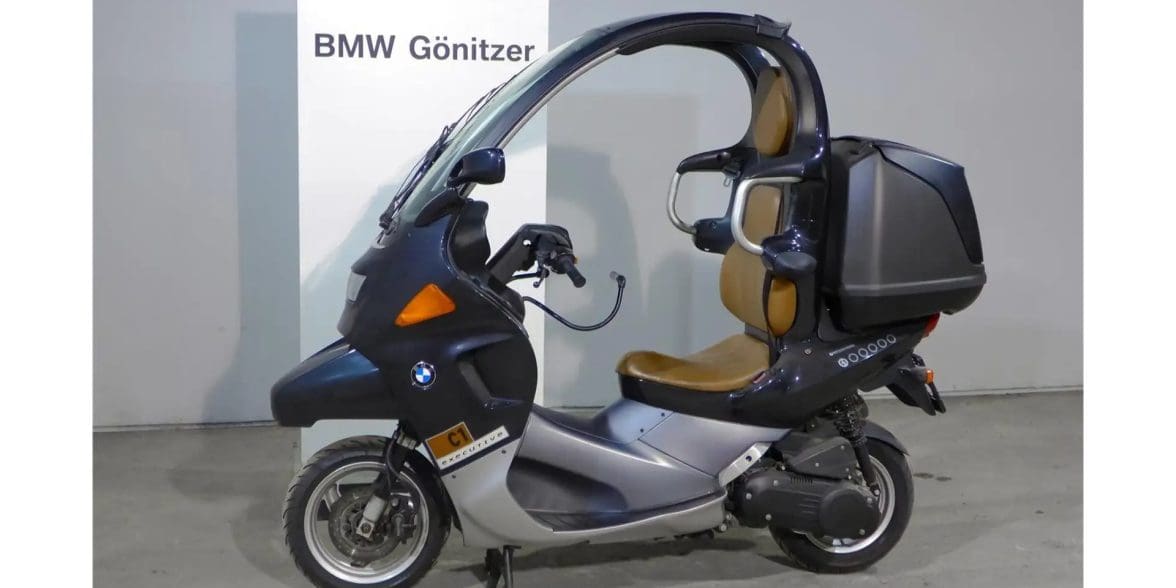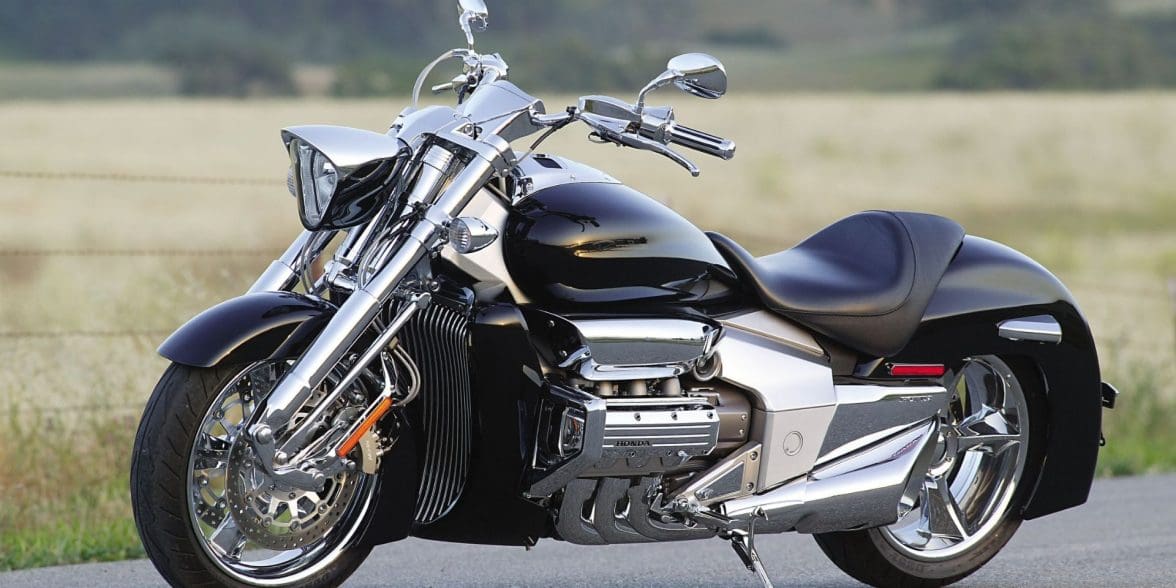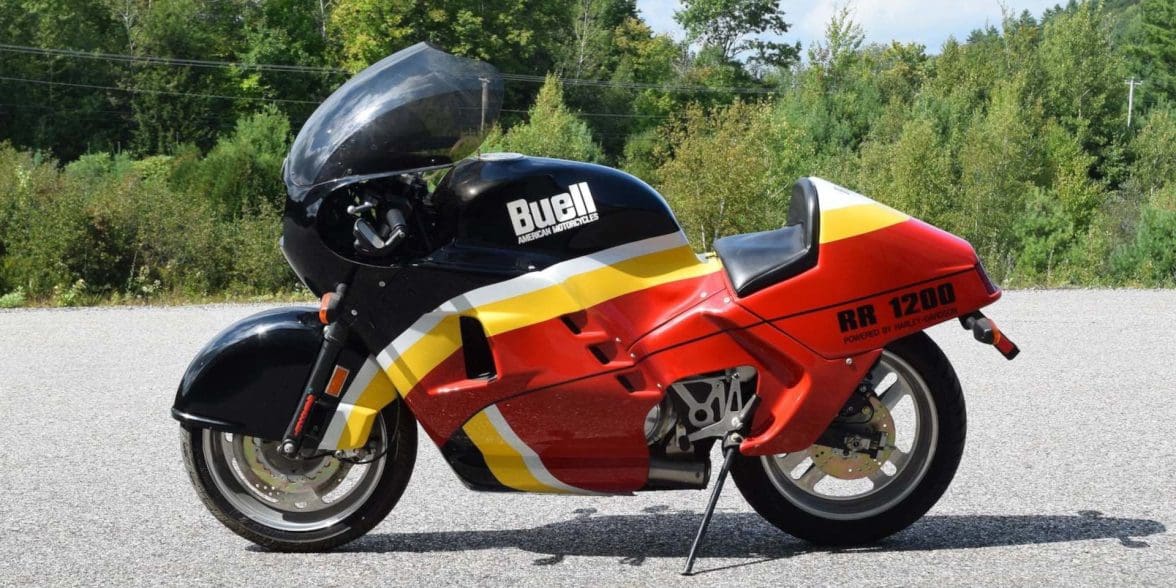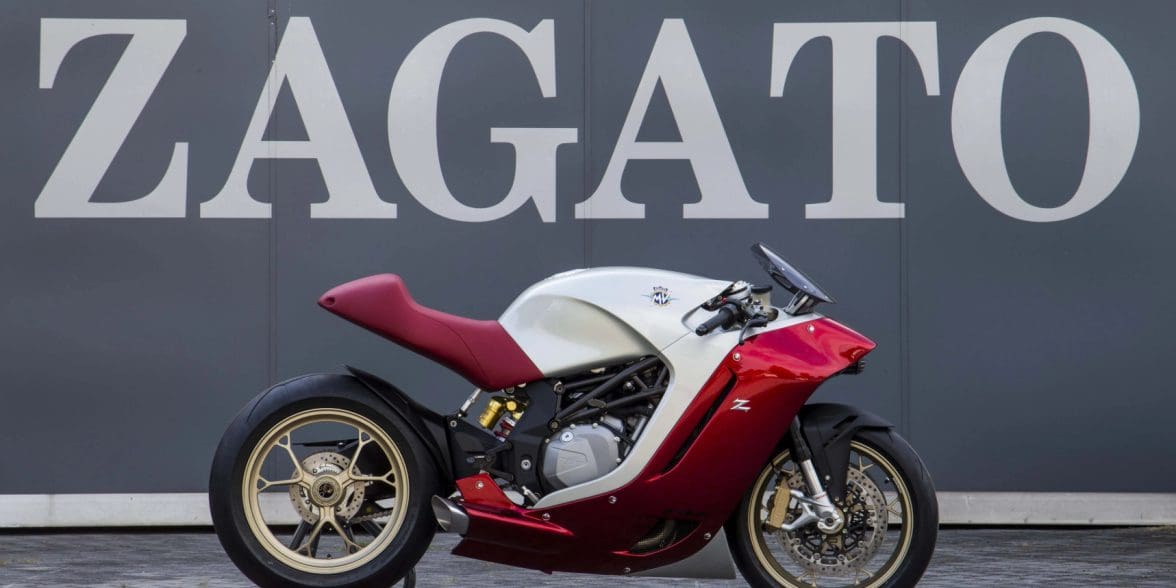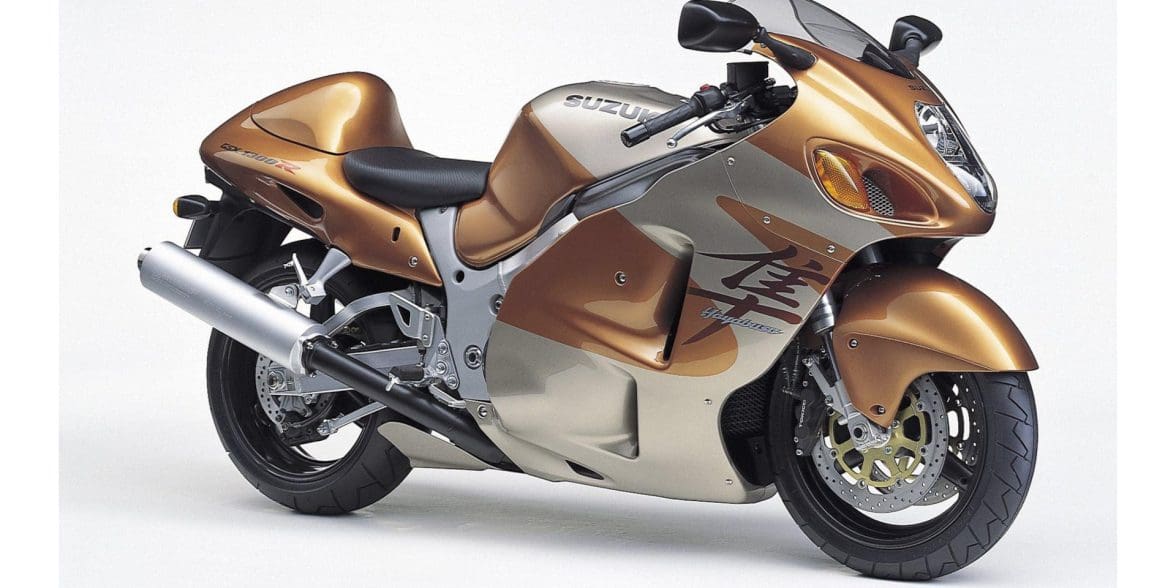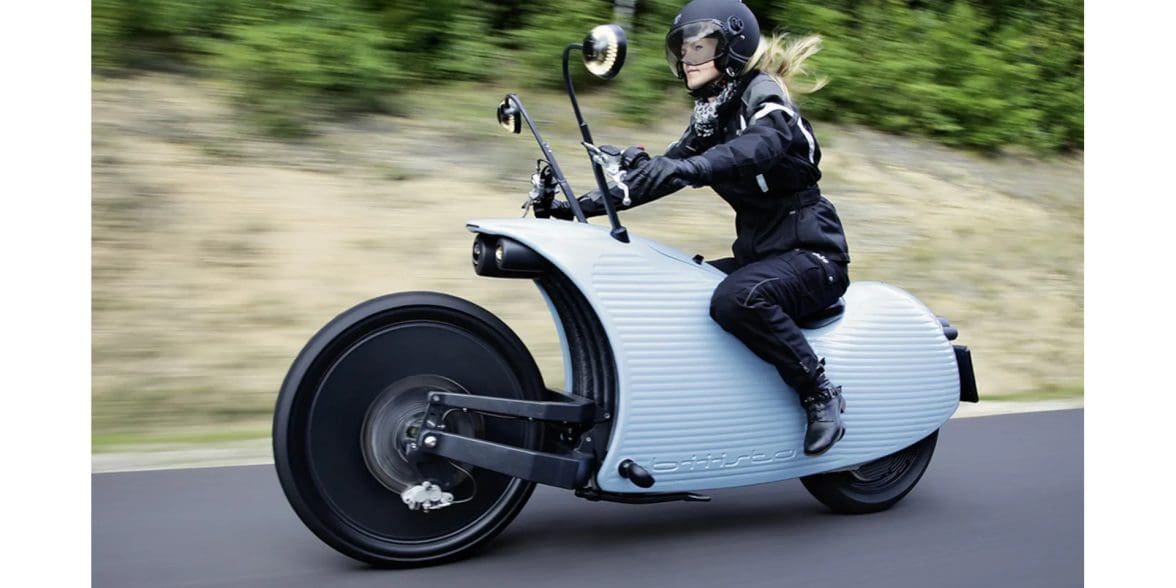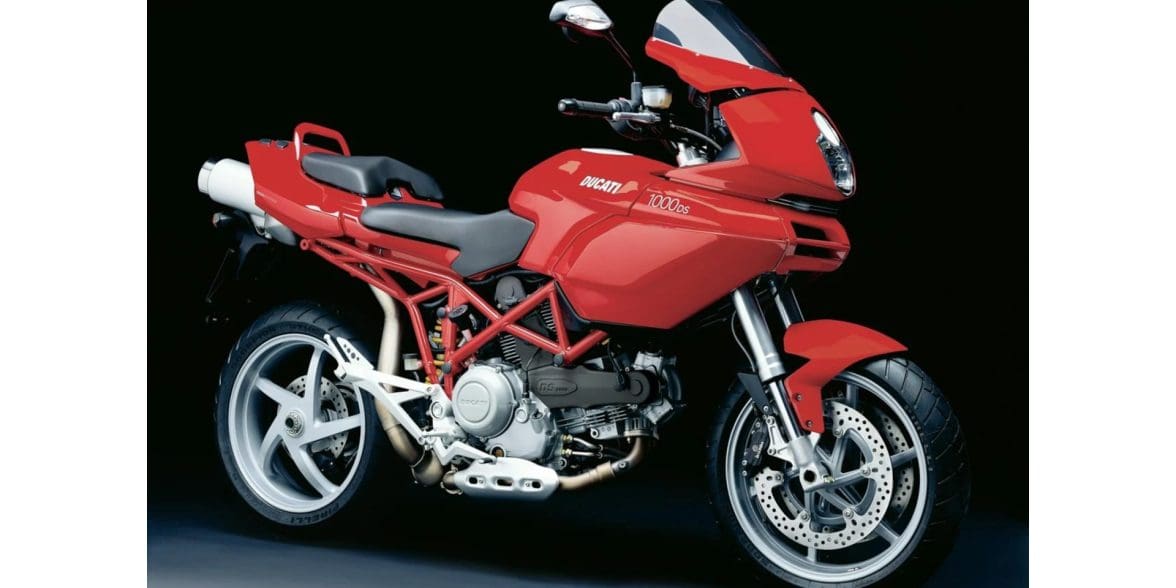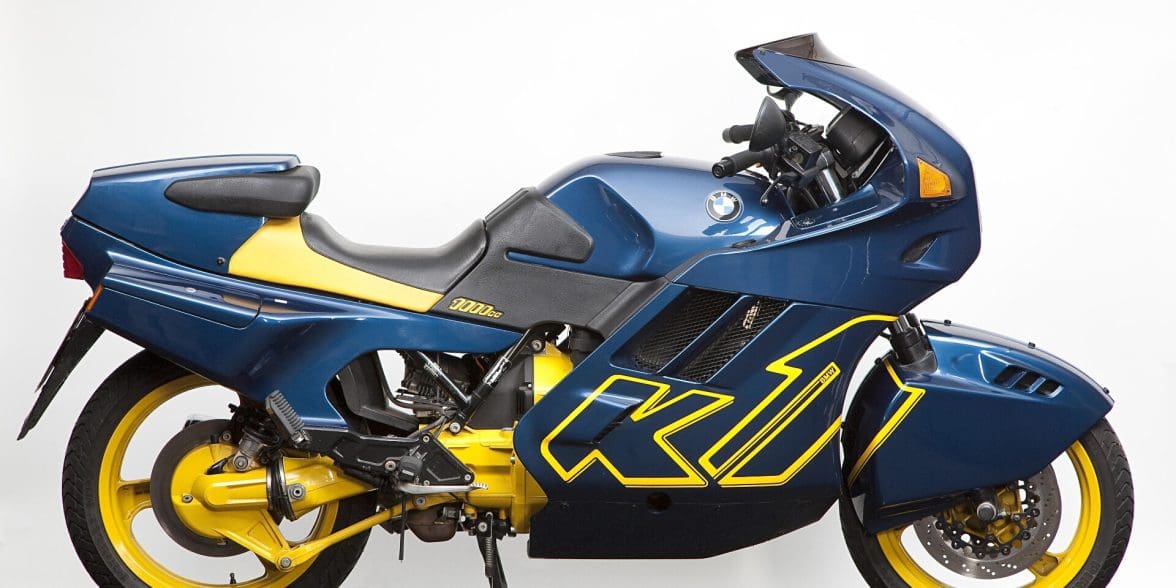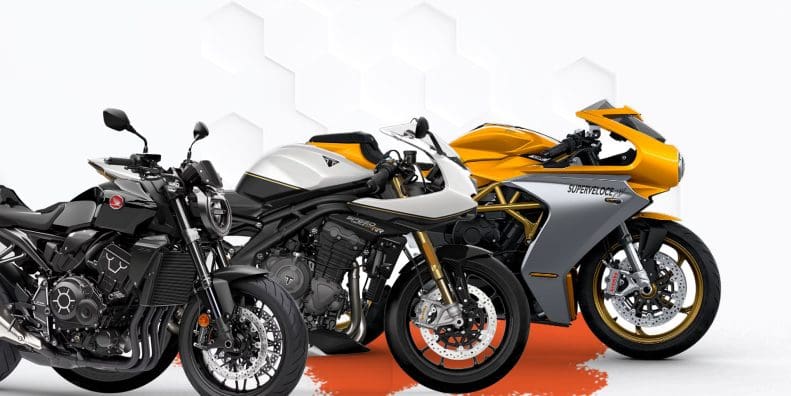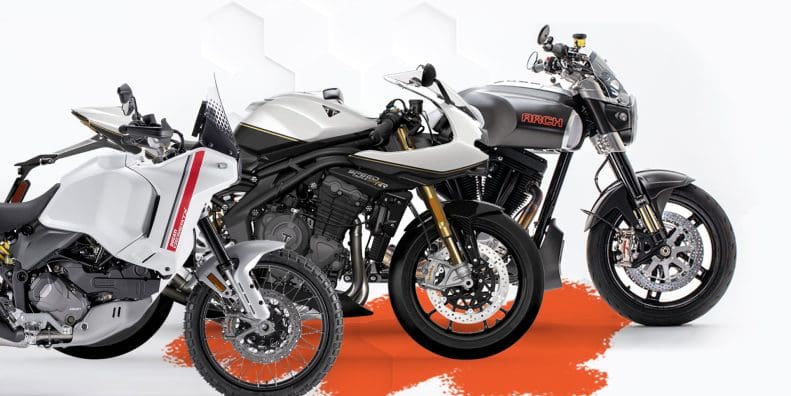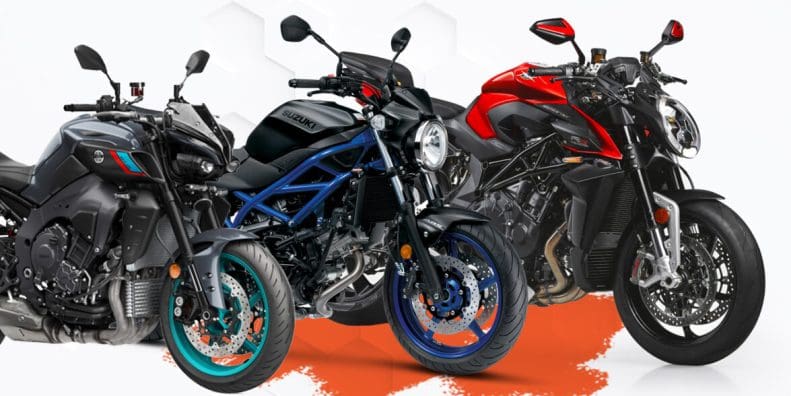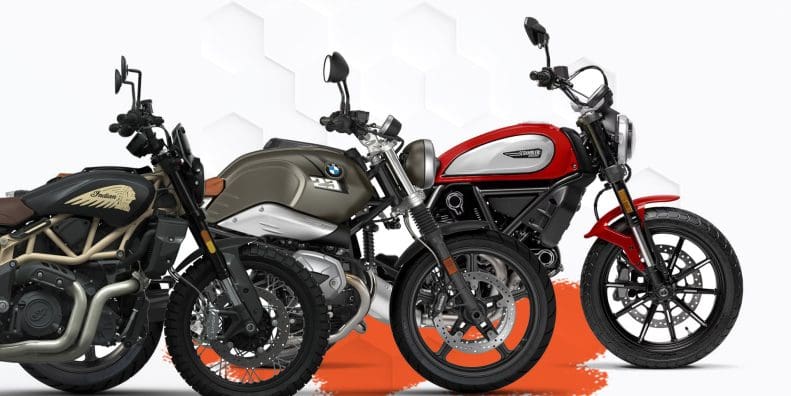The Ugliest Motorcycles Ever Made [2024 Edition]
Updated September 7, 2023 by Simon Bertram
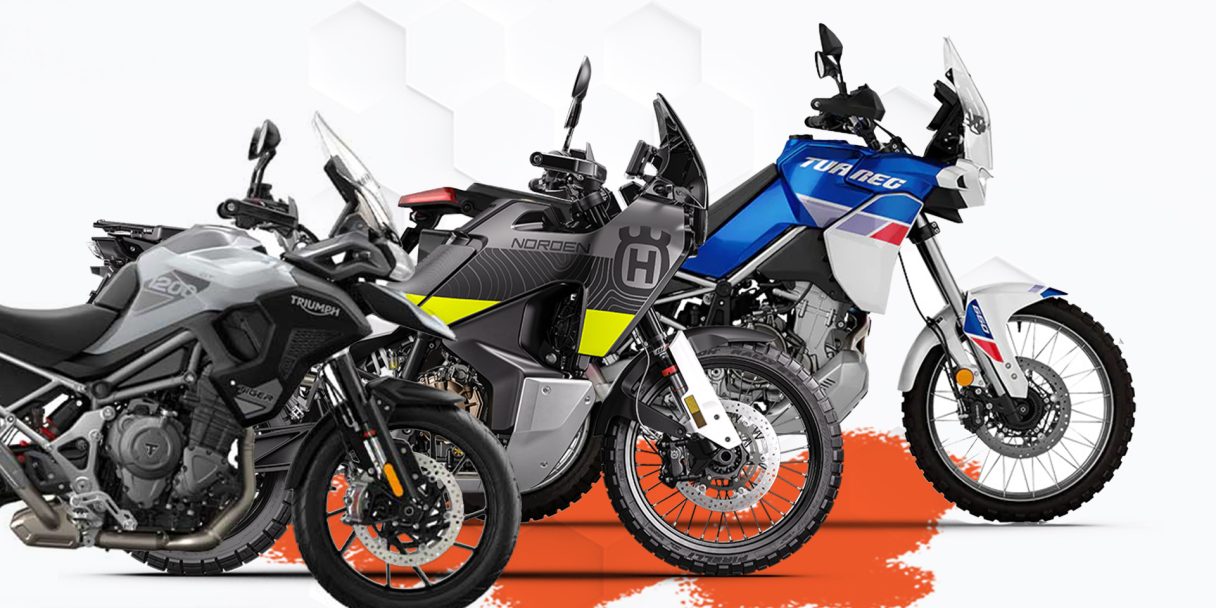
Sometimes A Bike Should Have Been Left On The Drawing Board
Article Quick Nav
These are our picks for the ugliest motorcycles ever made:
There are two sides to every coin, as the saying goes. As there are beautiful motorcycles out there, the ones that make your jaw drop slightly and your eyes widen when they are ridden by, or are unveiled at a trade show, there must also be the runts of the litter. The motorcycles that somehow, someway got made despite having something innately wrong with them.
See also: The Best Looking Motorcycles Ever Made
This is, of course, a highly subjective topic. It is very likely that our picks will not match yours, and that is perfectly fine. We all have our opinions, and even amongst us contributors and creators that make webBikeWorld what it is, we disagree more often than we agree on what is a beautiful motorcycle and what is something that makes us pull an "Oh god, what is that?!" face.
This list will not focus just on modern bikes, as motorcycles have been around for almost 125 years now. Within that timeframe, we have selected 8 motorcycles that maybe should have spent a little bit more time on the drawing board.
About Our Selections
The criteria for our selections were that the motorcycles selected were just that: motorcycles. An engine, two wheels, some handlebars, and somewhere to sit.
As well, we will reinforce that this is our opinion only. Some of these motorcycles might actually be very good bikes, have great utility, and/or have a special place in the history of two-wheeled fun, but as beauty is in the eye of the beholder, sometimes there are looks that only the original designers can love while the rest of us go "Ew..."
2000 BMW C1
For every manufacturer that has an amazing history of great designs, sometimes a miss is a good thing...
Why We Picked It:
In the almanac of WTF, the BMW C1 that was sold from 2000 to 2002 earns a spot on the first page. This is a company that helped create the entire shape of ADV bikes, that produces the drop-dead gorgeous S1000 RR superbike, and whose automotive side has some of the most desired luxury sports cars available. Yet, they somehow produced this runt.
Not content with just building a scooter, and the C1 was actually their first attempt at one, they must have transferred a designer from the automotive side in the middle of development. How else would a full back car seat and a roof have made it onto what would have been a decently acceptable, almost stylish little scoot?
BMW made some pretty bold claims that these days look like they were cracking eggs right above their own face, such as the fact that with the seatbelt (yes, seatbelt) done up, it was as safe as a family car in a collision, so much so that you didn't even need to wear a helmet.
Now, that might have been acceptable if it actually was able to gain any sort of speed approaching what a car could do. It had an anemic 125cc single that pushed out 15 HP and took about a fortnight to get to 30 MPH because the damned thing weighed as much as sport tourer at 408 lbs dry, and after only 12,000 were sold across 2000 to 2002, BMW quietly took it out behind the shed with a shotgun and mercifully killed it off.
Specifications:
Price: £4,000 in 2000 (Approx $9,000 USD in 2023)
Engine: 124.9cc four stroke single
Power: 15 HP
Torque: 8.9 lbs-ft
Transmission: Single speed twist-n-go
Curb Weight: ~440 lbs
Strengths:
Without the car seat or roof, it would have actually made a fairly stylish little scoot. Unfortunately, someone showed up to work in the wrong building one day and put a car seat and roof on what could have been a great little bike
The bold claims about it being so safe that you didn't need a helmet probably did attract a few buyers, but because of the class of vehicle it was, a motorcycle/scooter, almost everywhere mandated wearing a helmet, defeating the purpose of BMW's marketing campaign.
One of the most significant misses in BMW's entire history
Learn More:
2004 Honda Rune
This caused a nearly perfect 50/50 split in opinion here at wBW. Some love it, some hate it.
Why We Picked It:
To some, the Honda Rune from 2004 was a triumph of style and aesthetics. To others, it looks like the kind of growth you'd find on a year old piece of cheese that was forgotten in the back of your fridge and you only find because you're wondering what smells so bad.
It definitely looks organic, but not in the pleasant way. The most common reference is that it looks like a tumor that grew on a perfectly acceptable Honda Valkyrie F6C 1500, a genuinely nice cruiser to look at. Everything about it just seems wrong,
The headlight looks like it was yanked off a lamppost somewhere and duct taped to the fork tree. The tail seems to be attempting to replicate a classic American cruiser look, but is sticking out way too far. Then there is the radiator, which looks like the grate side of one of those things you put a hardboiled egg in and close to lid to make egg slices for salads.
Don't even start on the exhaust pipes either. If they had kept them as a three-to-one per side and punched them straight back, then okay, there would be a redeeming factor. But what in the nine hells were they thinking by making it into a gigantic exhaust that resembles a fart can that the younger generations used to put on Honda Civics?
Specifications:
Price: $24,499 in 2004
Engine: 1,832cc flat-six
Power: 118 HP
Torque: 121 lbs-ft
Transmission: 5 Speed Manual
Curb Weight: 888 lbs
Strengths:
Looked like some sort of tumor or mutation of the perfectly acceptable Valkyrie F6C 1500, its predecessor which carried a Gold Wing 1500cc engine in it.
A significant styling miss in terms of timing. If the Rune had come out in the 1990s, in the era of organically inspired shapes for cars and bikes, it might have been a rousing success
Lost Honda a significant amount of money, as the research, development, and design phase was so long that it ended up costing about $150,000 to make each Rune, and they were on sale for only $25,000
Learn More:
1988 Buell RR1200 Battle Twin
We're wearing our flak suits for listing this one, but let us explain!
Why We Picked It:
Erik Buell might have been a superb engineer, and could make a Harley-Davidson V-twin sing whatever song he wanted it to, but he was not an artist, not by a long shot. The R1200 Battle Twin is proof of that, and for two very good reasons.
First of all, Buell's focus was on power and efficiency. To be efficient, a motorcycle must also be aerodynamic. Now, in most cases, a designer will draft in someone with a spark of inspired talent to shape their motorcycle's body to be great to look at and slippery through the air. Erik, on the other hand, wanted the bike to be slippery through the air and to hell with the artists.
The result is a motorcycle that does actually have one of the lowest co-efficients of drag in the 20th century. It could reach 170 MPH around the oval of a speedway, and it was superbly efficient on fuel, allowing it to go a lap or two more during endurance races than competitors. However, the engine was a tad lazy to rev in the road going version, having to have been detuned slightly for regulations.
It is also stone dead ugly. There is no way around it, this was a bike shaped by physics and not an artist. Even the wrap-around windscreen is just wrong, as it looks out of place sitting so high with such an organic curve to it. As mentioned, it was great to tuck down under when roaring down a front straight, but if it scared off small children just by sitting there and looking like it did, then you know something's up.
Specifications:
Price: $9,104
Engine: 1,198cc (73 ci) V-twin
Power: 60 HP
Torque: Unknown
Transmission: 4 Speed Manual
Curb Weight: ~410 lbs
Strengths:
The RR1000 and RR1200 Battle Twin bikes have earned the nickname "The American Hayabusa" with good reason
Half of the weight of the bike was the engine alone
Was extremely lazy to accelerate in the road going spec, as it had four very tall gears instead of 5 or 6 speeds where a shorter first gear would have given it much more pep
Shaped by physics, not by artists. The front wheel cover is like an ugly christmas sweater, and the main body looks like a fish that washed up on shore and has been baking in the sun for a couple of days
Undeniably an impressive achievement in aerodynamics, but we just wish it wasn't so bloody ugly
Learn More:
2016 MV Agusta X Zagato F4Z
To quote a famous movie: "The horror... the horror..."
Why We Picked It:
Flat out, the MV Agusta F4 750 is one of the most gorgeous things, not just motorcycles, to ever exist. We are blessed by Massimo Tamburini's skill and flair for creating one of the most beautiful superbikes of all time.
So why, in the name of all the Italian gods, did Zagato have to get involved and create this... this... abomination? Thankfully this was a one-off partnership between the two companies for a Japanese businessman that bought a 2015 F4 and wanted it to be styled differently than the rest.
Instead of being inspired by Tamburini's lines and aesthetic flow, it looks like Zagato took a blunt hatchet, whacked some holes in the side of the bike, ripped off that glorious front fascia and microwaved something until it was just warm enough to drop on the frame and melt down into a shape.
But the biggest travesty is the seat. Why, oh why, did they have to mess with the seat?!? We can't be too graphic in our language here, but from the side it resembles the shape of something that is battery powered that women utilize when they are rather lonely...
Zagato has done amazing work for FIAT, Alfa Romeo, Aston Martin, even Ferrari, but they should definitely stick to four wheeled vehicles and leave the two-wheeled ones to people that actually know what they're doing.
Specifications:
Price: $9,104
Engine: 645cc V-twin
Power: 70 HP
Torque: 46 lbs-ft
Transmission: 6 Speed Manual
Curb Weight: 470 lbs
Strengths:
An unforgivable heresy in the face of Massimo Tamburini's inspired design of one of the most glorious superbikes to ever exist.
Looks like it was styled by an axe murderer that had a very dull hatchet, not his sharp and deadly axe
The reprofiled seat looks like a female self-care implement from the side
The superb upswept quad exhausts have been hacked off and two little fart cans poke out of the fairings just before the rear wheel, another travesty that should be considered a crime against aethestics
Learn More:
1999 Suzuki Hayabusa (First Generation)
Shaped more by an aerodynamicist than an artist, and it shows
Why We Picked It:
We're not saying that the Suzuki Hayabusa is a bad bike. It won the power wars of the early 2000s and can reach simply ridiculous speeds with stability and poise. However, its first generation that released in 1999, it was rightly described by four letters: U-G-L-Y.
We don't deny that its shape is primarily there to slice through the air and move it aside with as little buffeting as possible, with little slashes in the fairings to allow potential dead air zones such as behind the radiator to vent. That is how you make a bike go as fast as possible with as little drag as possible. But you can't let physics alone shape the body of your motorcycle!
It was also eventually revealed in 2009 that Yohiura Koji, the man that designed the Hayabusa, had intentionally "made it grotesque, to create a strong initial impact."
He went on to further explain "By doing this, once the model was out in the market and the performance of it have been proven, I thought that people will start to show interest to the weird design."
Well, it may have taken a complete facelift and rework for the modern 2023 Suzuki Hayabusa for people to finally actually accept the design, so in a way, it worked. It just took 20 years to get there.
Specifications:
Price: $9,104
Engine: 1,2995cc inline four
Power: 173 HP
Torque: 99.6 lbs-ft
Transmission: 6 Speed Manual
Curb Weight: 563 lbs
Strengths:
Shaped primarily by physics, with gaps and holes to prevent dead air that make it look like a bloated fish gasping on the shore as it tries to flop itself back into the sea
The designer, Yohiura Koji, admitted a decade after the first generation released that it was intentionally designed to be hideous, so that once someone experienced or saw its performance capability, it would be unforgettable.
Admitted, the 2023 Suzuki Hayabusa has smoothed out a lot of the ugliness and can even be called somewhat pleasant, but it took over 20 years to get this point
Learn More:
Johammer J1
This one should have had the paper it was drawn up on burned so that it could never be made
Why We Picked It:
If the BMW C1 at the start of this list is the first page of the Almanac of WTF, the Johammer J1 is the bike on the cover. Seriously, who can look at this electric monstrosity and not utter the three words that the abbreviation WTF stands for?
Everything about it is just so utterly and completely wrong. It looks like a beetle out of A Bug's Life, but horribly mutated somehow into a motorcycle after getting wasted on vodka. Then again, it is Swedish, so you never know...
The leading front fork, the "antennae" for both the handlebars and mirrors, the flat rear end, and what the hell is up with those headlights? If other motorcycles on this list would scare small children from their looks, the J1 scares adults with its looks.
It's also hideously expensive at about $24,000, has a max range somewhere close to 90 to 95 miles, can sustain 75 MPH, and is as heavy as a Yamaha YZF-R3 is dry. That's about all the specs we want to list because this thing is just so offensive to our eyes we don't want to spent any more time on the manufacturer's website.
This is one motorcycle that just begs the question: Why? Just why?
Specifications:
Price: €22,500 (Approx $24,060 USD)
Engine: Permanent magnet brushless DC motor
Power: 22 HP
Torque: 160 lbs-ft
Transmission: Clutchless Direct Drive
Curb Weight: 350 lbs
Strengths:
Why?
Just why?
Seriously... WHY?!
Okay, some actual specs... it has a maximum range of 95 miles (~150 KM), a top speed of 75 MPH (125 KPH), and it weighs almost as much as a Yamaha YZF-R3
Learn More:
Ducati Multistrada (First Generation)
When a bike earns a name like "Uglystrada," you know it belongs on this list
Why We Picked It:
Today, the Ducati Multistrada, in either V2 or V4 forms, is a triumph of design. A glorious meld of Italian flair with rugged, determined functionality, a bike for any type of surface, hence it's name. Multistrada literally translates to "Many Roads."
However, when it was first born in 2003, it definitely got the functionality part of that balance right, by about 99%. The artistic, Italian flair? We suspect it might have be off cavorting about the countryside with a bottle of some lovely red Italian wine, because when it finally showed up late to work, it wasn't fashionable and it was outrageously drunk.
The front headlight and front fairing look like something that came off a 1990s upright vacuum cleaner. The tail end was a girder with a cushion haphazardly plopped down on it, and it ended a good half foot before the exhausts did. The pillion footpegs were mounted on probably the only part of the bike drawn when the designer wasn't sloshed.
It rightfully earned the name "Uglystrada" and sadly remained unchanged for a full two years. It received some cosmetic surgery in 2005 with the "facelifted" 1000DS reworking the front fairing into a more rounded shape, but it wasn't until 2010 that Ducati finally capitulated and redesigned the whole bike into the beautifully purposeful thing that it is now.
Specifications:
Price: $7,000 to $10,000 in 2004
Engine: 992cc desmodromic L-twin
Power: 84 HP
Torque: 60.4 lbs-ft
Transmission: 6 Speed Manual
Curb Weight: ~465 lbs
Strengths:
Was definitely a function over form bike
Very capable of what its name stood for, that of riding many roads, but was almost embarrassing to be seen riding
Conversely, if you did drop the bike while on a dirt or gravel road, it may have improved the looks, so there was not that much to worry about with a drop!
Was refreshed in 2010 into the sleek, stylish machine we still know and love today in 2023
Learn More:
1988 BMW K1
Hey, even the greats can miss twice!
Why We Picked It:
BMW just seems to have problems with anything that has a letter followed by a 1. The C1 was a disaster. In the automotive side, the M1 never really took off, but when the recent 1M was on sale, it was one of the best cars you could buy. Thus, between the M1 car and the C1 "scooter," there fell the K1 touring bike.
As we've harped on about during this list a few times, the biggest thing a bike needs to be efficient, especially for touring, is aerodynamics. If the bike is smooth, stylish, cuts the air like a knife but also looks good while doing it, it's often a win. Unfortunately, in the late 1980s, sometimes aerodynamics took a back seat to "futuristic" designs.
Thus, the "cyberpunk" influenced K1 was a blocky, squared off motorcycle that had to look in a dictionary to find out what "aerodynamics" meant. Perhaps the most damning review of it was while it had a superb 987cc longitudinal inline four that produced 100 HP and 74 lbs-ft of torque, it was labelled as "quick but not fast."
It bullied the air aside around its front fairings instead of cutting through it. It also weight 516 lbs dry, without having any fluids aboard. Fully wet, it ended up weighting over 570 lbs because of its large fuel tank (5.8 US Gallons), big radiator, and oil-hungry engine.
The only redeeming factor that the K1 has going for it is that it laid the groundwork for the K-series sport tourers, which eventually let to the K 1300GT in the early 2000s. In a way, it was the origin of the superb K 1600 series of tourers, but its descendants at least went to science class and learned about physics!
Specifications:
Price: $13,000 in 1990 ($30,400 in 2023)
Engine: 987cc longitudinal inline four
Power: 100 HP
Torque: 74 lbs-ft
Transmission: 5 Speed Manual
Curb Weight: ~570 lbs
Strengths:
Style was definitely influenced by the cyberpunk wave that hit in the late 1980s
The front wheel cover was the only really aerodynamic part. The front fascia acted more as a battering ram than an aerodynamic aid, and at higher speeds it would actually cause the K1 to start buffeting
"Quick but not fast"
Weighed as much as a middleweight cruiser, despite being as small as a supersport
It did lay the basic foundations for what eventually would become the super BMW K-1600 family of distance and sport tourers


